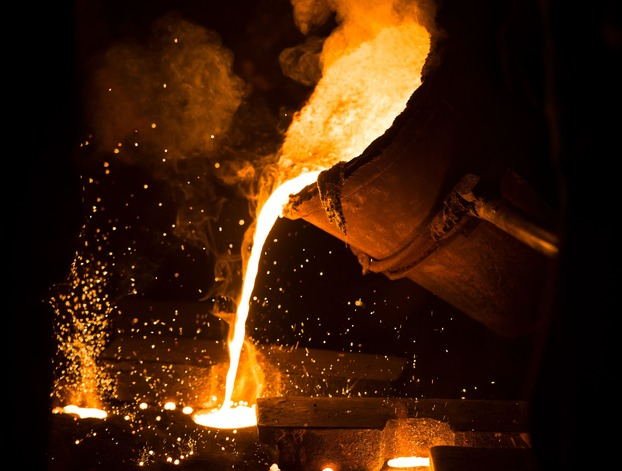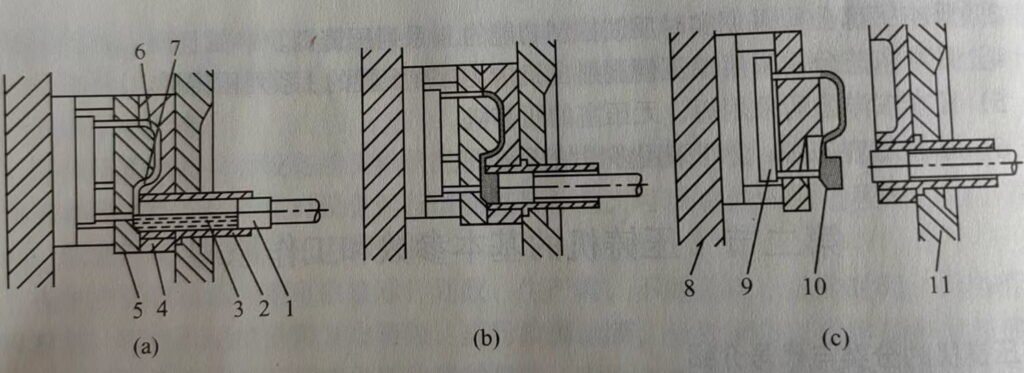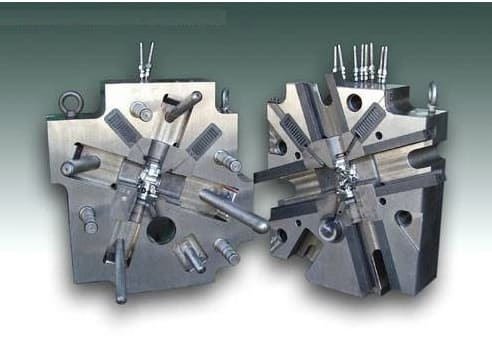High pressure die casting is a metal casting process that is used to produce near-net shape parts from metal alloys. The process begins with the injection of molten metal into a mold cavity, which is then cooled and solidified to create the desired part. Aluminum die casting is a popular variation of this process that is used to produce high-quality parts from aluminum alloys. In this blog post, we will introduce you to the basics of aluminum high pressure die casting step by step
1. Design and make a die mold
The design of a mold is a complex and comprehensive process, it including many parts:
Design steps
AUTO CAD is a widely used 2D design software, MASTERCAM, SOLIDWORKS, and UNIGRAPHICS are commonly used 3D design software if the parts are designed in 2D and need to be converted to 3D

a)Part Die Casting Process Analysis
After the customer provides 2D drawings or 3D models, our engineers will analyze the feasibility of die casting and make process plans according to the customer’s requirements
b)Casting design
Determine the parting surfaces, the corresponding drawing direction and slope, the holes to be cast out and the holes to be post-machined, and the critical dimensions of the part by the die-casting process plan
c)Die casting mold general design
Based on the casting information, weight, wall thickness, and structural characteristics, the design of the die-casting mold is started, preliminary confirmation of the process parameters, selection of the model, dimensions of the mold, etc.
If the demand for die cast parts is high, we can consider multiple cavities, for the big one, usually, there is just one die cavity.

The influence of mold design on the quality of die castings
- The design of the pouring system directly affects the filling state of the metal liquid, die-casting forming, surface quality, and internal quality
- .Parting surface selection affects the shape of the die casting and the ease of mold processing
- the arrangement of the cooling system, which affects the control of the mold temperature and thus the filling of the casting ‘solidification state

- The location and size of the overflow slot and exhaust slot design directly affect the appearance of the casting and whether it produces porosity defects
- The accuracy of the mold processing affects the surface roughness and dimensional accuracy of the casting
- Top bar arrangement affects whether the die casting can be smoothly removed from the mold and does not produce deformation”
2. Prepare the metal alloy for die casting
The choice of die casting alloys should be based on the requirements of the die-casting parts, in terms of chemical composition, physical properties, and mechanical properties.
which material is suitable for the hot chamber:360.0, 380.0, 413.0, 518.0
Which material is suitable for cold chamber : A360.0 , A380.0 , 383.0 , 384.0, A413.0
There also have two kinds of die casting processes, cold chamber process and hot chamber die casting,

Those two kinds of manufacturing processes are different of the Location of the crucible and the method of pouring, you can check my other blog which explains the detail of the cold chamber process and hot chamber process.
So after you decide which material to use, then we can choose the hot chamber machines or cold chamber machines.
In our current production, hot chamber die casting is used for zinc die casting.
For aluminum die casting, we use cold chamber die casting more often.
3. Melt the metal alloy in the furnace
The furnace is used to melt the die-casting alloys and maintain them at a constant temperature.

There are also two types of furnaces
The centralized melting furnace is where the metal is melted together and fed into the die-casting machine.
Separate furnaces are equipped with one furnace per die-casting machine
The pouring temperature is different for each metal, for example, 630-730 for aluminum alloys and 41-430 for zinc alloys.
The molten metal is then poured into the casting chamber of the die-casting machines.
4. Pour the molten metal into the mold
This is the most important of the die-casting process, the mold was put on the die-casting machine,

the mold has two die halves. one is a fixed die, another is a moving die.
step1. Two die halves separate
When the temperature of the mold is preheated to about 1/3 of the metal liquid pouring, production can start.
The temperature of the mold greatly affects the mechanical properties of the die-casting, the dimensional accuracy, and the life of the die-casting mold, which must be done strictly according to the specifications.

step2.A spray release agent on the mold surface
Spray coating is really to form a thin film on the surface of the cavity and liquid metal isolation, therefore, the careful selection of coatings and reasonable spraying operation is an important factors to ensure the quality of the casting, die life, production efficiency
step3. molten metal poured into the mold under high pressure
This step is divided into three stages, low-speed pressurization, high-speed filling, and increasing stage

The low-speed pressurization injection is designed for the smooth flow of the metal fluid and the smooth discharge of air.
When the metal fluid reaches the inner gate, it can be switched at high speed so that the metal fluid can be filled at high pressure and high speed
Increasing the stage to allow the die casting to solidify under pressure
5. Cool and solidify the metal in the mold
After the metal is filled in the mold, it needs to be cooled and solidified. The cooling time is related to the wall thickness of the die casting.
The thicker the wall, the longer the cooling time. After solidification,
the die-casting can be taken out from the mold.

6. Remove the solidified metal from the mold
After the die-cast parts have solidified, the mold separates, and the die-cast parts are exposed, previously we had pliers to take the product out of the mold manually, now it is all robotic to take the product out of the mold, it is safe.
Conclusion
This is a simple die casting process,but there is a lot more work to be done to get the final die-cast product. like machining and surface finish
I hope this helps, if you have any questions please feel free to contact us.








